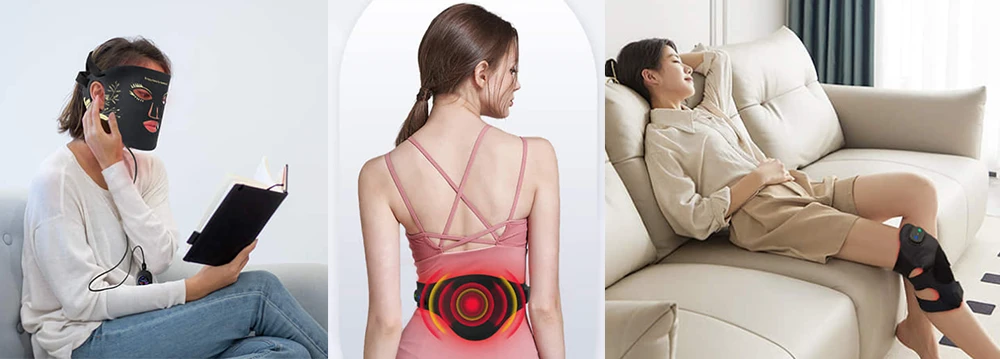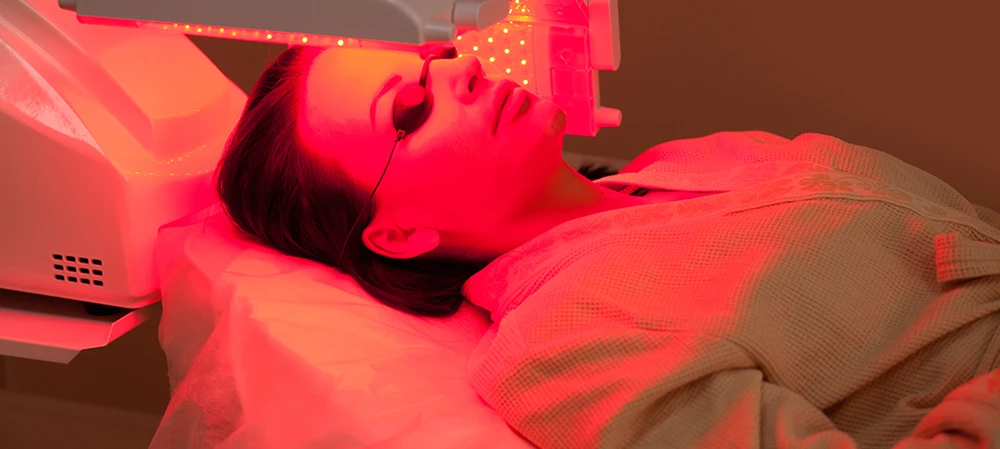Do You Need Eye Protection for Red Light Therapy?
Red light therapy offers many benefits, such as better skin health, pain relief, and overall wellness. But what about your eyes? Is there a risk of harm from red light therapy devices, and should you take precautions to protect them?
While many enthusiasts highlight the growing benefits of red light therapy, the issue of eye protection is often overlooked. Some recommend using protective eyewear, while others suggest that specific wavelengths of red light therapy might actually promote eye health.
Feeling confused? In this blog, we'll explore whether you need eye protection when using red light therapy devices.
How red light therapy affects your eyes
The visible light spectrum is the part of the electromagnetic spectrum that we can see, with wavelengths ranging from about 400 to 700 nm. On either side of this visible range, there is invisible light: ultraviolet (UV) light on the left and infrared (IR) light on the right.
The cornea, which is the clear outer layer of the eye, is very sensitive. UV light can harm our eyes due to its brightness and heat, so it’s important to protect them.

What about red light (600 to 700 nm) and infrared light (800 to 850 nm), often used in red light therapy? These types of light have longer wavelengths and lower energy compared to UV light, making them less likely to cause burns or damage to the eyes. Some studies suggest that red light therapy can help with issues like dry eyes and under-eye bags, and it may even have benefits for age-related eye problems [1] and diabetic retinopathy [2].
However, our eyes are very sensitive to light, and too much exposure can still be harmful. It’s important not to stare directly at the light source and to follow safety guidelines when using red light therapy.
Do you need eye protection for red light therapy?
As mentioned, red light itself isn’t harmful to your eyes. However, our eyes are sensitive and can easily become strained or uncomfortable with high brightness. Therefore, it’s usually best to avoid direct exposure during red light therapy.
Whether you need eye protection depends on the type of red light therapy device you’re using. If your eyes aren’t directly exposed to the light, wearing eye protection isn’t necessary. For example, with a red light therapy mask for facial treatment, you can put on the mask before it’s turned on. Since your eyes won’t be directly exposed to the red light, extra protection isn’t needed. You can open your eyes and read books or play computer at the same time. This also applies to other red light therapy devices, like belts, pads, or knee braces used for pain relief or inflammation reduction.

However, if you’re using larger red light therapy panels to treat your face or body, eye protection is essential. Since you might look directly at the panel, the intense red light could cause eye strain or potential harm. Always follow safety guidelines and wear eye protection when using these large panels.

How to use eye protection when using red light therapy?
You might first think of using sunglasses - but consider what they’re actually designed for. Sunglasses are designed to block UV light. Red light therapy, however, operates at different wavelengths, so standard sunglasses aren’t adequate for this purpose.
For eye safety, use goggles or masks specifically designed for red light therapy. These specialized protective gear block out potentially harmful wavelengths. This way, you can fully enjoy the benefits of red light therapy without compromising eye safety.
Can you close your eyes instead of using protection?
Imagine lying under intense sunlight with your eyes closed. You’d still feel the heat on your eyelids, and upon opening them, your vision might be blurry for a moment, right? Similarly, simply closing your eyes isn’t a reliable form of eye protection during red light therapy, especially when your eyes are close to red light therapy devices with long exposure.
Our eyelids are surprisingly thin, only about 0.5mm. While they do reduce light transmission by 50-75%, a significant amount of red and infrared light can still penetrate through to your retinas. Plus, your eyelids might naturally flutter or twitch during therapy. For full eye safety, it’s best to use dedicated eye protection rather than just closing your eyes.
Source:
[1] https://pmc.ncbi.nlm.nih.gov/articles/PMC5364001/
[2] https://www.ncbi.nlm.nih.gov/pmc/articles/PMC3668802/
Disclaimer: This blog is for educational and entertainment purposes only and is not intended to be used for medical diagnosis, treatment, or prevention of any disease, illness, or health problem.

